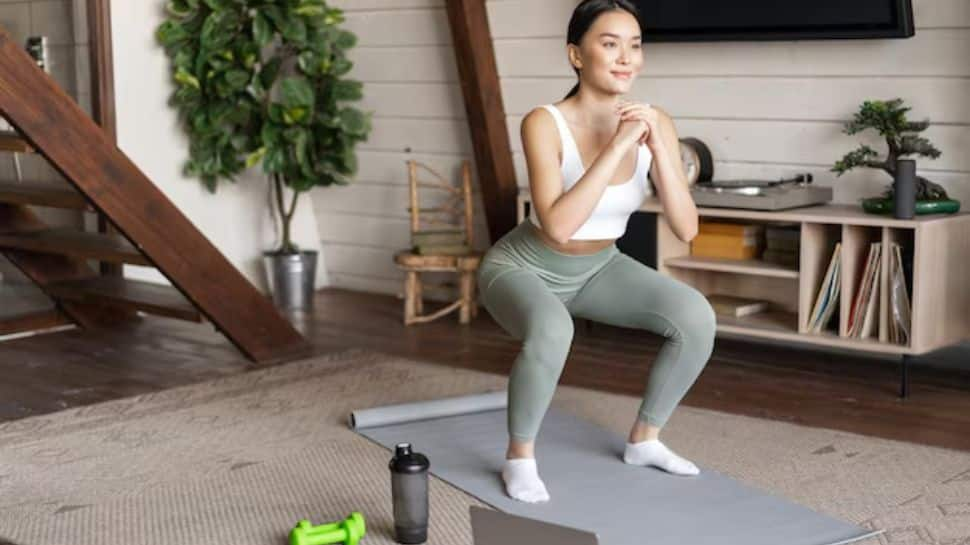If you want to build strength in your lower body, squats are a must-have in your exercise routine. But remember, not all squats are the same. Wall squats, or wall sits, offer a straightforward yet effective way to take your training to the next level. They focus on your leg, glute, and core muscles differently, providing distinct benefits that can help you become stronger and more stable.
Here are six reasons why wall squats are important for building strength:-
1. Strengthens Important Lower Body Muscles
Wall squats mainly work your quadriceps, hamstrings, and glutes. By holding the squat position against a wall, you engage these muscles in a steady hold, which builds their strength and endurance. The longer you maintain the position, the more muscle growth you can achieve.
Benefit: Wall squats help tone your lower body muscles, improving your overall strength and stability. This is great for activities like running, jumping, and even walking.
2. Boosts Core Stability and Balance
Although wall squats focus on your lower body, they also activate your core. To hold the squat for a longer time, you’ll need to engage your core muscles, including your abs and lower back. This persistent engagement helps improve your balance and stability.
Benefit: Strengthening your core with wall squats helps with your posture and makes everyday activities and other exercises safer and easier.
3. Increases Muscle Endurance
Unlike traditional squats, which involve movement, wall squats require you to hold a position. This forces your muscles to stay tense for a longer duration, which enhances endurance. As you challenge yourself to hold the position longer, your muscles will adapt and improve.
Benefit: Wall squats help delay muscle fatigue, which leads to better performances in activities requiring stamina, like running, cycling, or playing sports.
4. Promotes Joint Health and Stability
Wall squats are gentle on your joints compared to other squat variations or weightlifting. The wall provides support, allowing you to focus on your form and properly engage your muscles without putting too much strain on your knees, hips, or lower back. They’re an excellent choice for those worried about joint stress or recovering from injuries.
Benefit: By easing the strain on your joints while strengthening the surrounding muscles, wall squats can improve joint health and reduce the risk of injury.
5. Improves Lower Body Mobility
Regularly doing wall squats can enhance your range of motion in your hips, knees, and ankles. The position encourages deep squatting, which promotes joint flexibility and mobility over time. This is especially beneficial for those who sit for extended periods or have limited flexibility.
Benefit: Wall squats can enhance your lower-body mobility, making movements like bending, squatting, and lifting smoother and easier.
6. No Equipment Needed, Great Results
One of the best things about wall squats is that you don’t need any equipment. All you need is a wall and your body weight. This makes wall squats an adaptable exercise for everyone, no matter your fitness level or access to a gym. Whether you’re at home, the gym, or traveling, you can fit in some wall squats anytime.
Benefit: Wall squats are easy to do anywhere, perfect for anyone wanting to strengthen their body without complicated or pricey equipment.
How to Do Wall Squats:
To maximize your wall squats, it’s important to maintain the right form. Here’s a simple guide to get it right:
1. Get into Position: Stand with your back flat against a wall, keeping your feet shoulder-width apart. Your feet should be about 1-2 feet away from the wall.
2. Slide Down: Gradually lower your body into a squat, ensuring your knees align with your ankles and your thighs stay parallel to the ground. Make sure your knees don’t go past your toes.
3. Engage Your Core: Tighten your core to stabilize your body. Keep your back flat against the wall.
4. Hold It: Stay in this position for as long as you can while keeping good form. Start with 20-30 seconds and gradually increase your time as you get stronger.
5. Stand Up: Push through your heels to return to standing slowly, maintaining control of your movements.
Tips for Wall Squats:
– Keep your knees aligned with your toes to prevent unnecessary strain.
– Ensure your back remains flat against the wall throughout the exercise.
– Avoid letting your knees cave inward; stay aligned for better stability and effectiveness.
– As you improve, try variations like holding weights or performing single-leg wall squats.
Wall squats may seem simple, but they are powerful for building strength, endurance, and stability. Whether you’re an experienced athlete or just starting out, this easy exercise can transform your workout by boosting your lower body strength, improving your balance, and enhancing your overall fitness. Plus, since they require minimal equipment, wall squats can fit seamlessly into any fitness routine, whether at home, in the gym, or while traveling.
(This article is meant for informational purposes only and must not be considered a substitute for advice provided by qualified medical professionals.)

